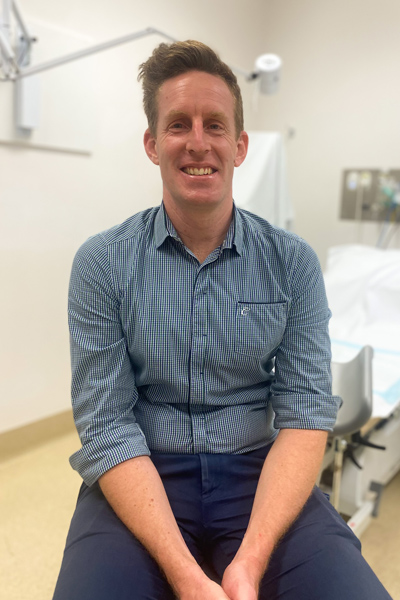Pelvic pain vs endometriosis: a gynaecologist gives us the low-down

Dr Will Milford knows the importance of getting to the bottom of gynaecological pain
With endometriosis affecting one in ten women, and pelvic pain affecting as many as one in five – Redcliffe Hospital gynaecologist Dr Will Milford knows the importance of getting to the bottom of gynaecological pain, no matter the cause
In fact, there are as many as 15 different types of pelvic pain include menstrual cramps, ovulation, cystitis or urinary tract infections, pelvic inflammatory disease, sexually transmitted diseases, and, of course, endometriosis.
Dr Milford believes it’s important for women to understand that pelvic pain does not always mean they have endometriosis, as it’s common for women to jump straight to this with increasing awareness of the condition.
“I have had women break down in front of me after their laparoscopy when they find out they don’t have endometriosis,” he said.
“They have a lot of hope that the surgery will mean an answer for their pain, but it’s not always the case.
“Pelvic pain can be treated with several other healthcare avenues, and I think it’s important for women to understand this more general approach to pain rather than jumping straight to surgery.”
Endometriosis is a painful chronic menstrual health disorder that can be hard to diagnose, as the only way to determine a diagnosis is for the patient to have surgery.
The condition occurs when tissue like the lining of the uterus grows outside the uterus, causing pain as the growth can’t escape the body.
Endometriosis falls under the category of pelvic pain, the overarching condition which includes symptoms such as severe and steady pain in the pelvic region, dull aching, sharp pains or cramping.
Surgery plays an important role, but other elements can be just as effective to manage all kinds of pelvic pain. Even if someone does have an endometriosis diagnosis, these other avenues shouldn’t be discounted.
“Pelvic pain of all kinds has such a big impact on people’s lives. They often need time off work, can struggle in social lives and relationships, even in things like sport and other activities,” Dr Milford said.
“Surgery plays an important role when other avenues are exhausted, but we shouldn’t disregard psychological and medical support and physiotherapy so quickly when it comes to pelvic pain – there are more techniques and treatments that can help.”
